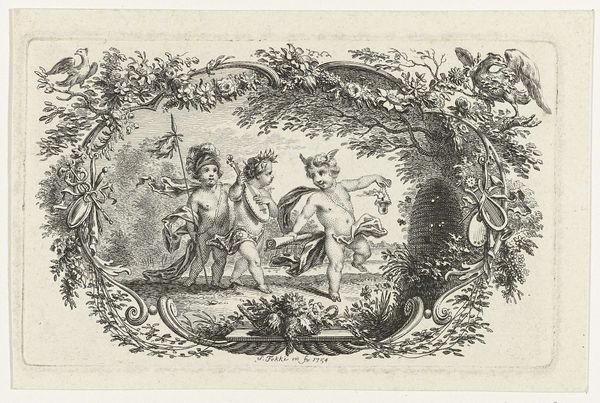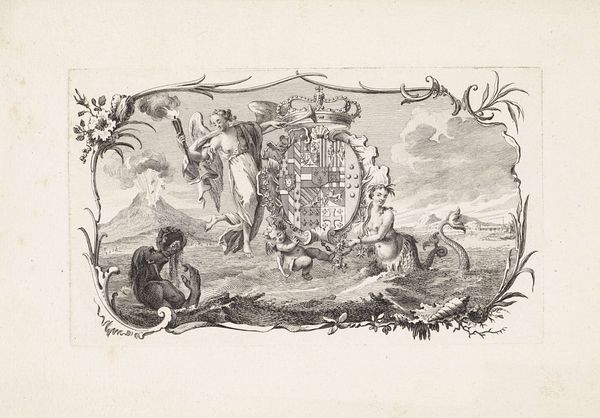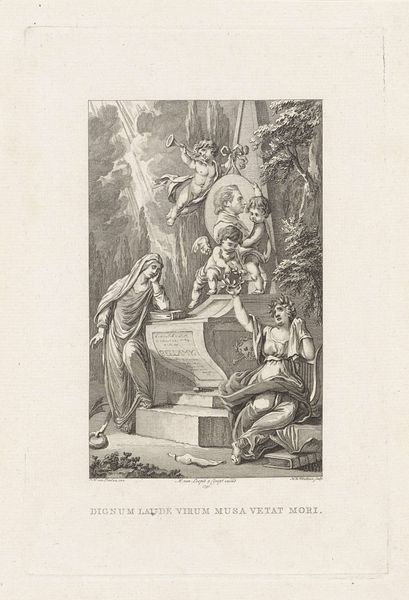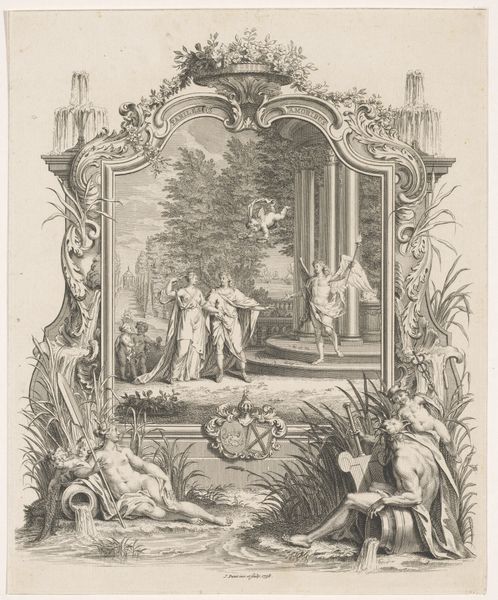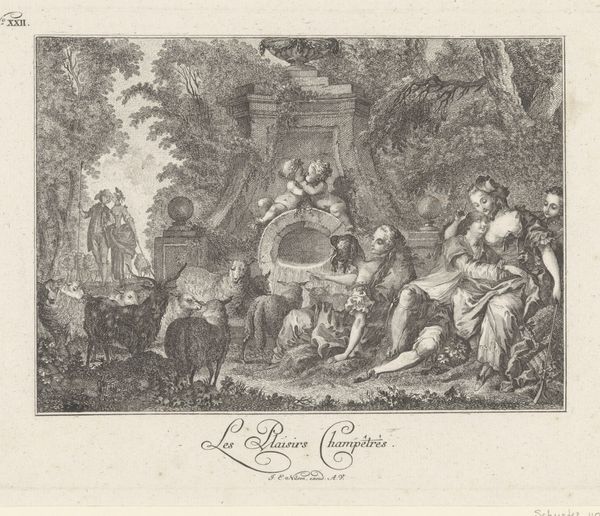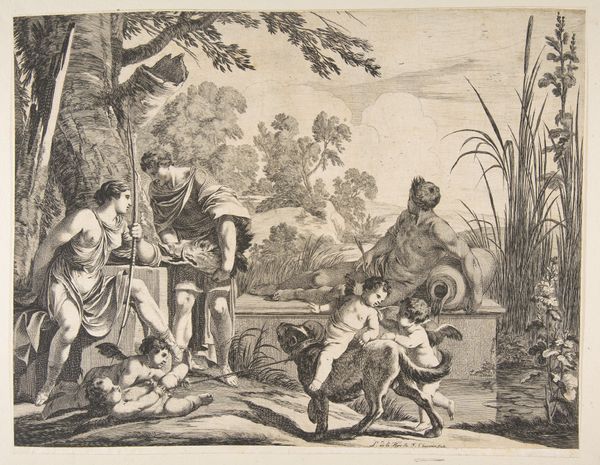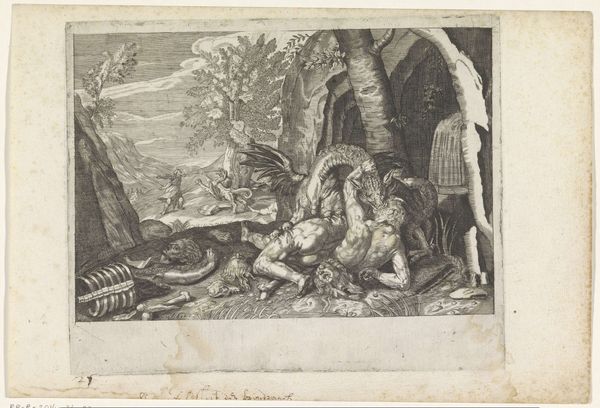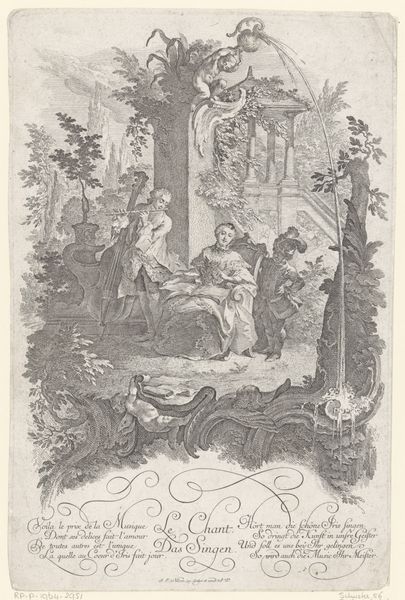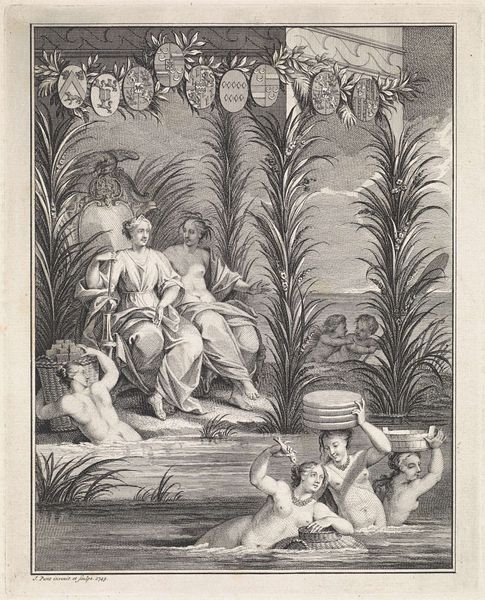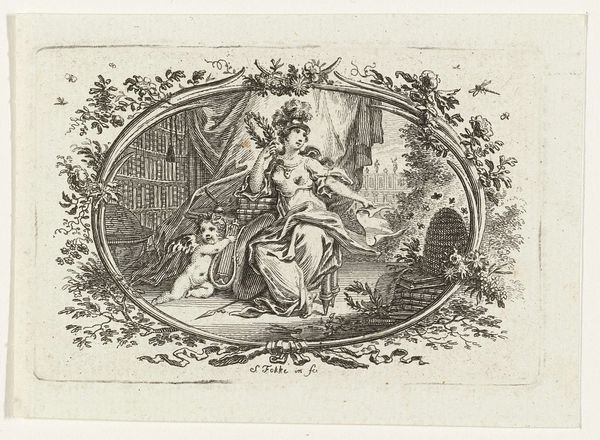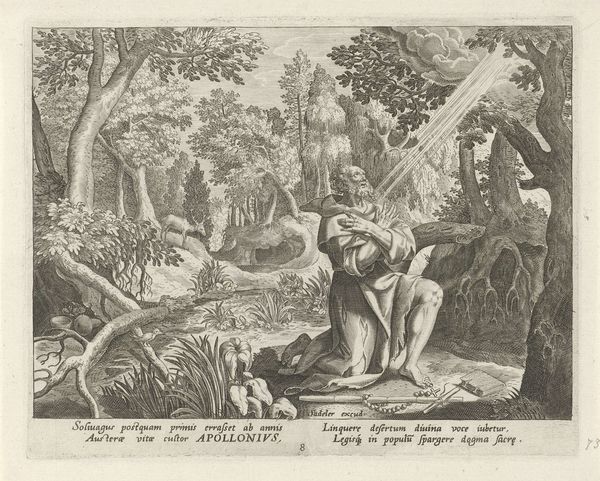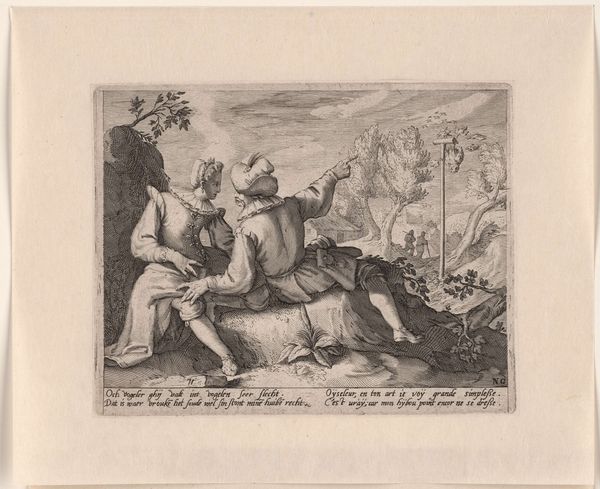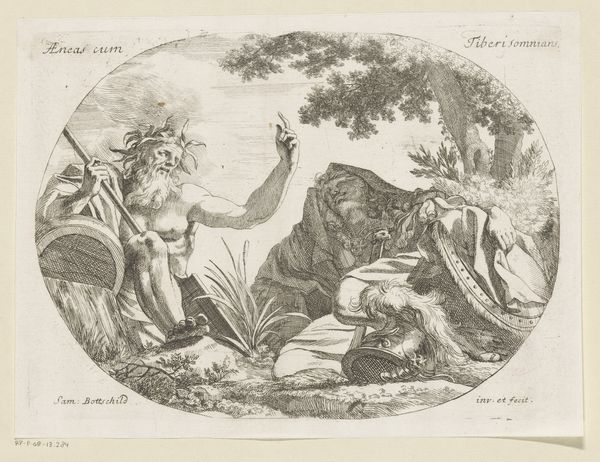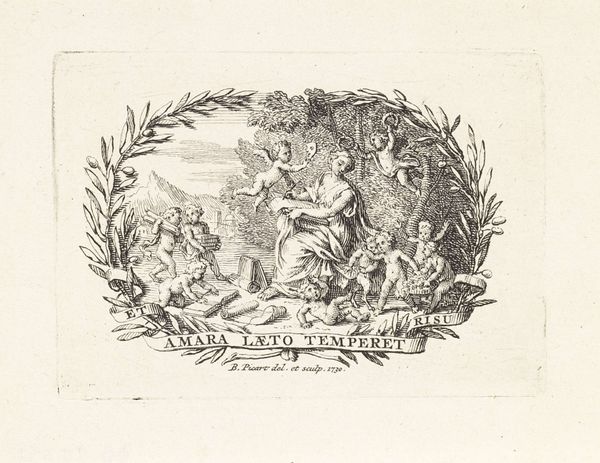
engraving
#
allegory
#
baroque
#
landscape
#
classical-realism
#
figuration
#
history-painting
#
engraving
Dimensions: height 61 mm, width 76 mm
Copyright: Rijks Museum: Open Domain
Bernard Picart created this print, "Fleeing Water Nymphs," in 1720 using etching. It depicts a scene of mythological nymphs fleeing from male pursuers, framed within an elaborate border of reeds and weaponry. Picart was a key figure in the transition from the Baroque to the Rococo style, and his prints often reflect the social and cultural values of his time. Made in the Netherlands, a nation undergoing significant economic and social changes in the early 18th century, the image creates meaning through its representation of classical themes within a contemporary context. The fleeing nymphs might be interpreted as a commentary on the vulnerability of women in a patriarchal society, or as a broader reflection on the anxieties of a rapidly changing world. Historians use resources, such as period literature, social commentaries, and institutional records, to understand this work. This helps to contextualize the print within the artistic conventions and social structures of its time.
Comments
No comments
Be the first to comment and join the conversation on the ultimate creative platform.
